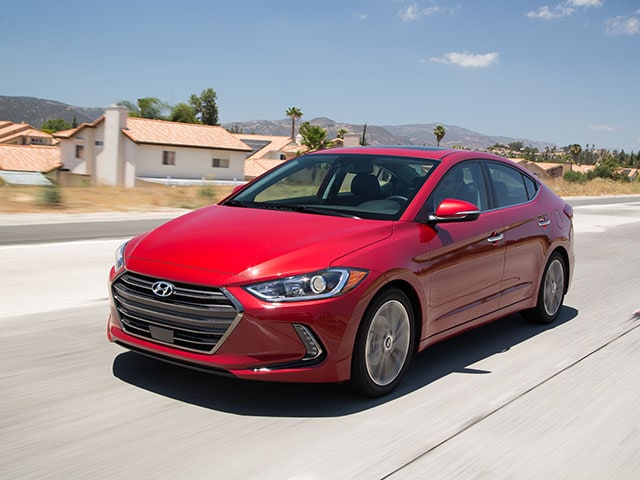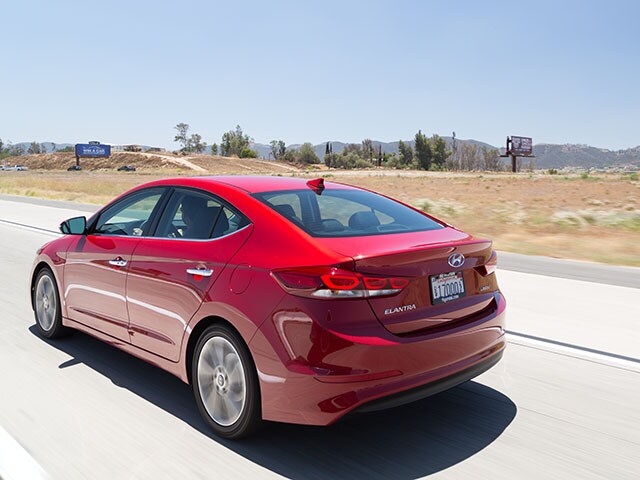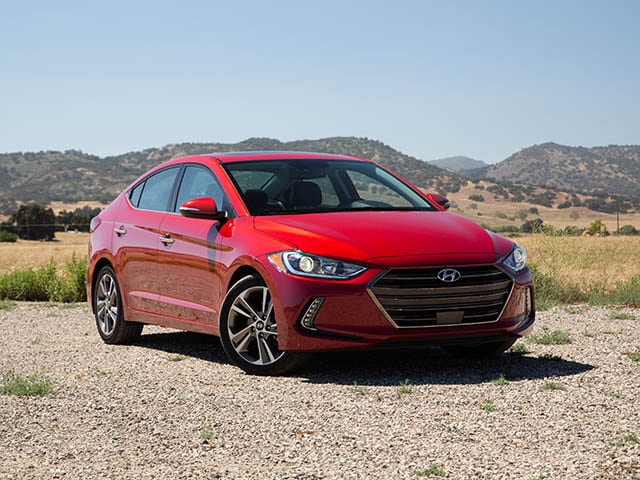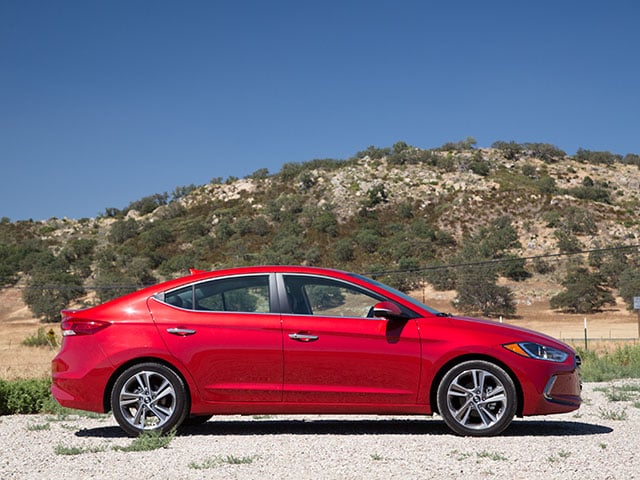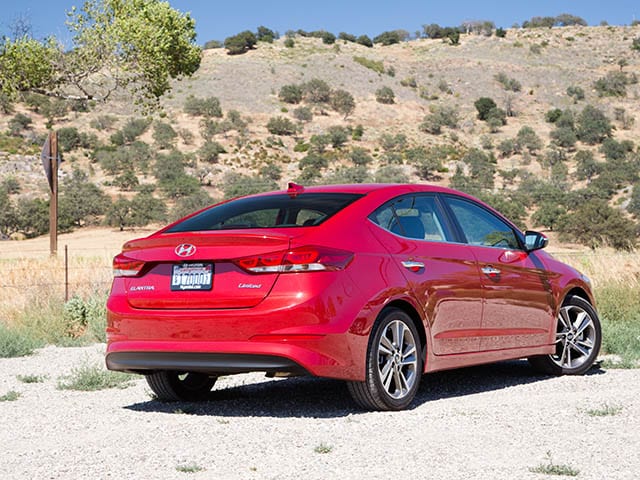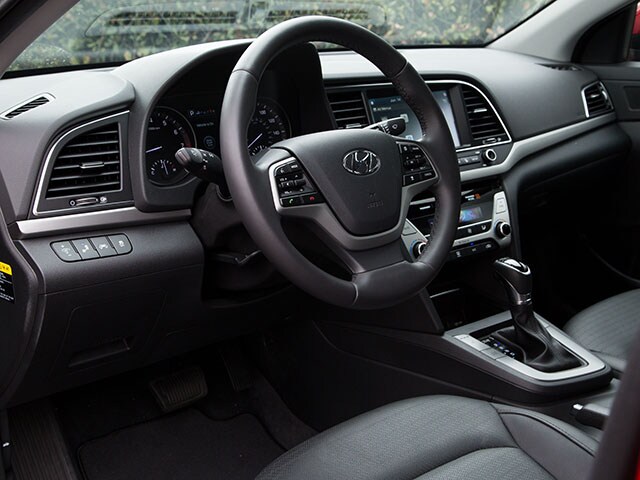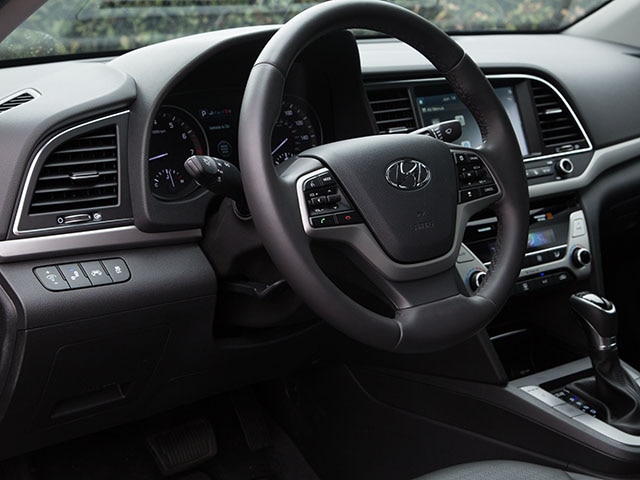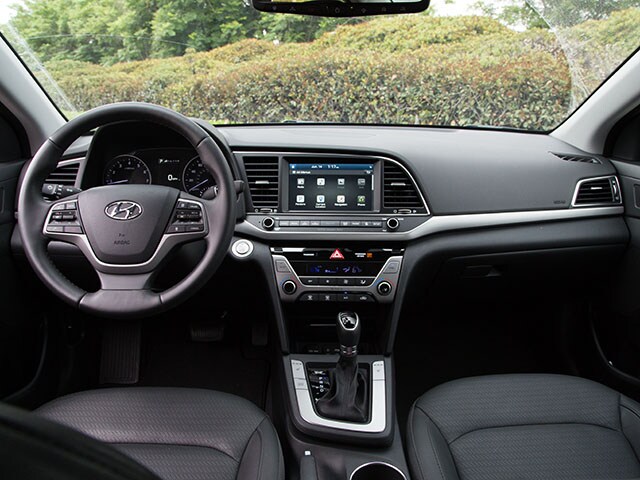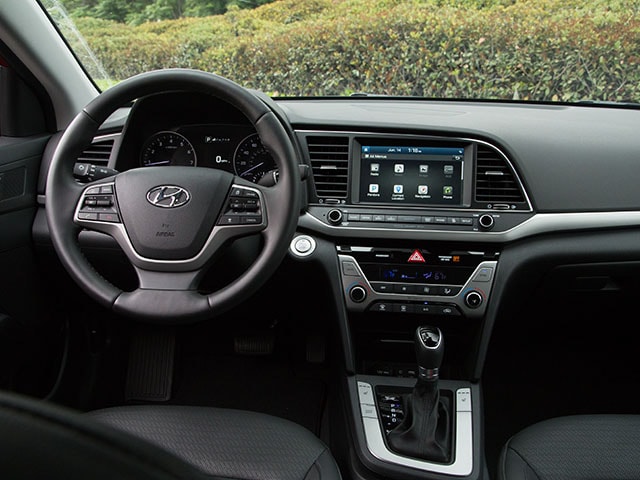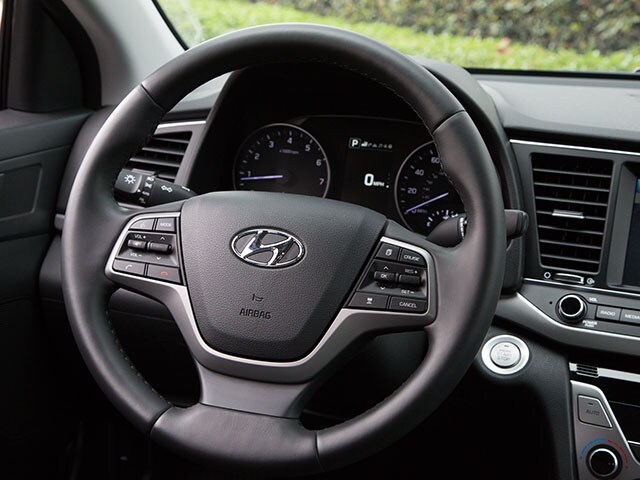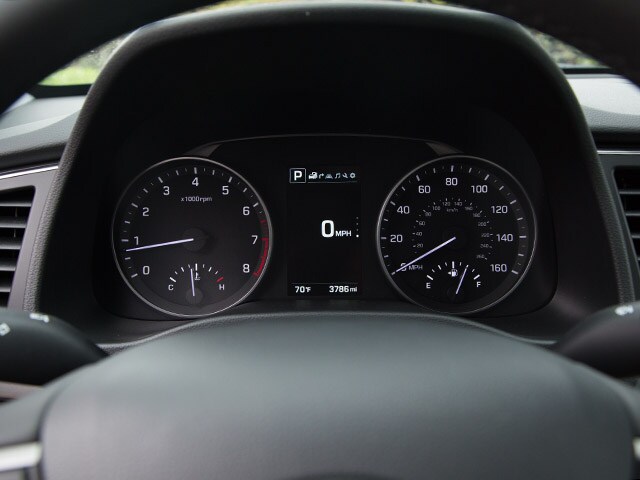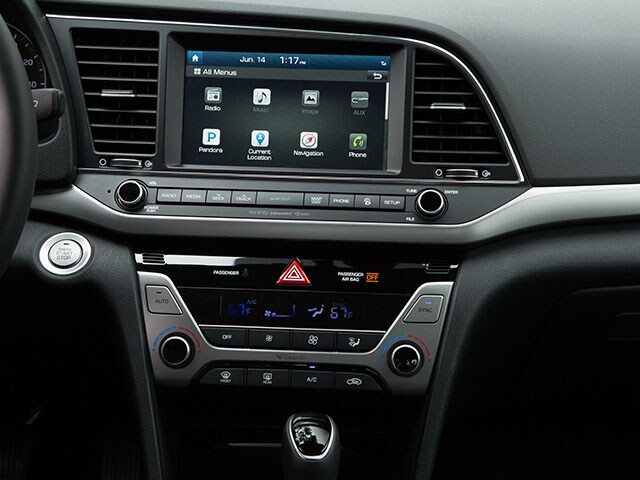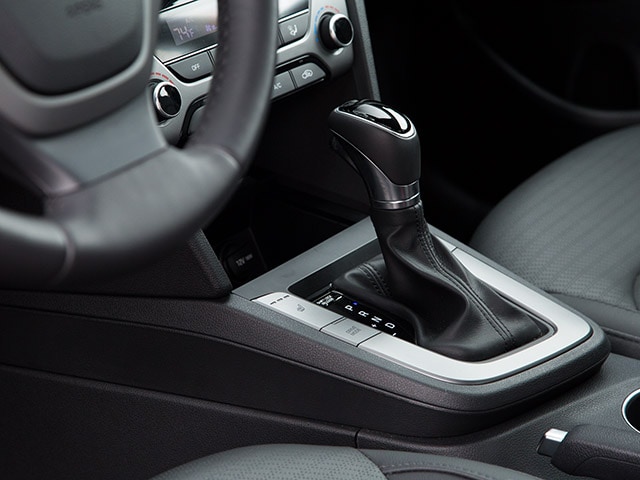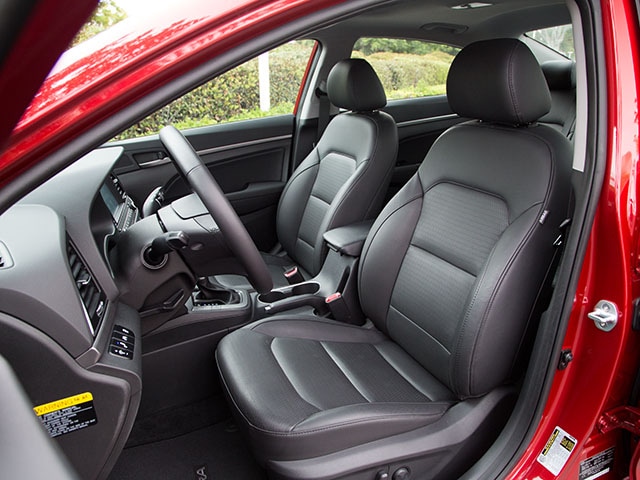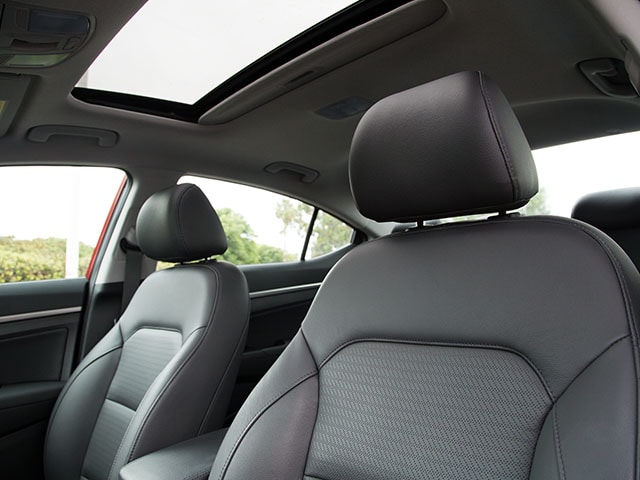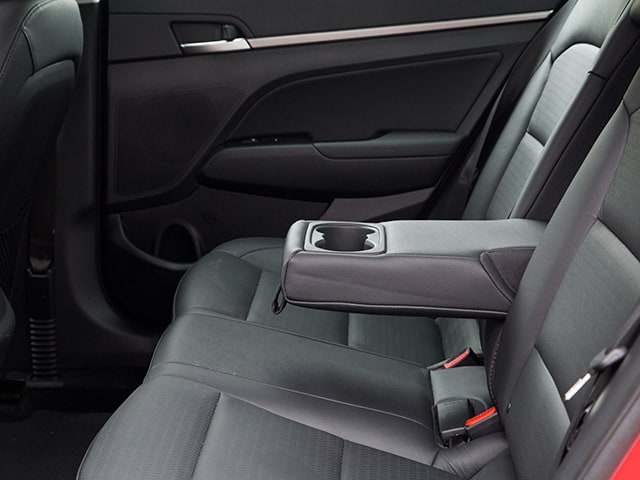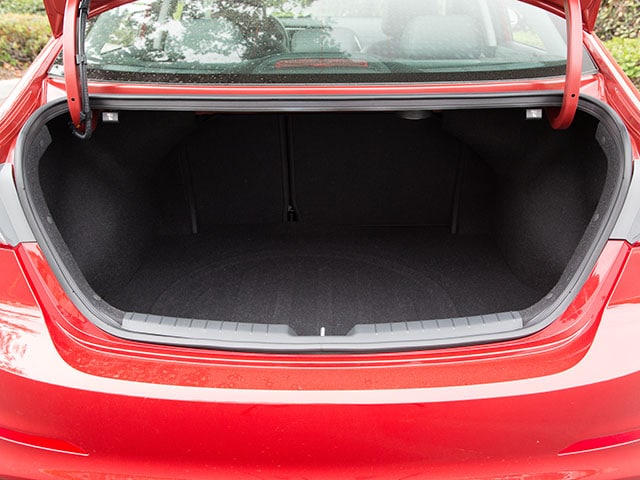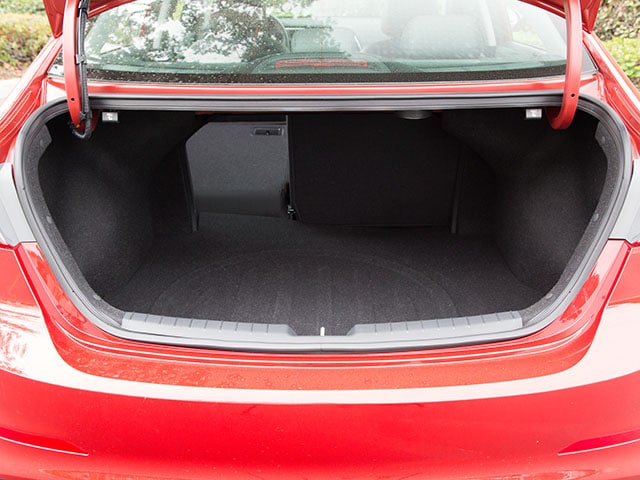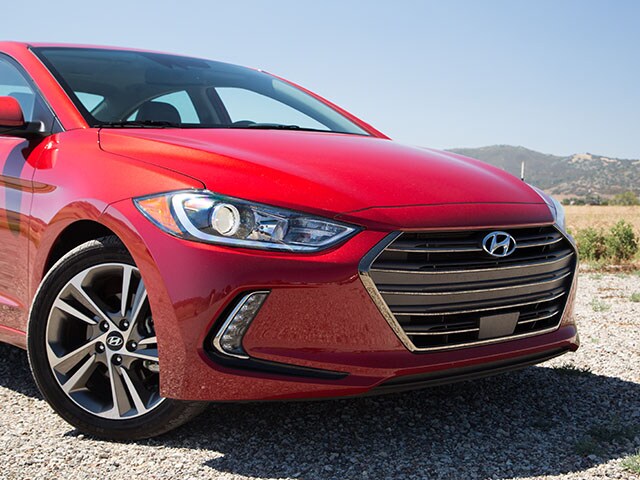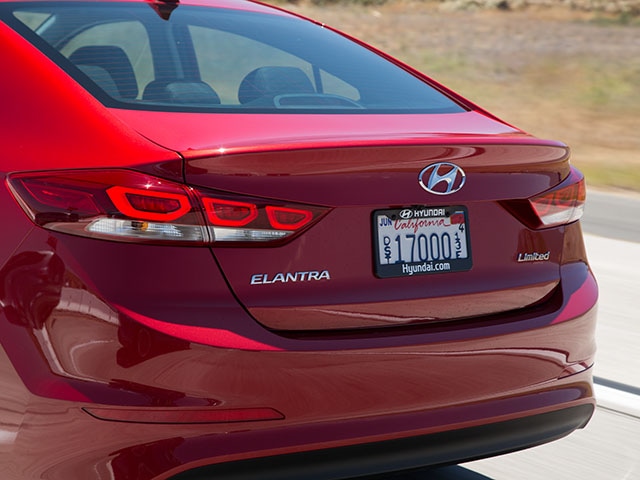Next Compact Car
Another Step Closer to Greatness
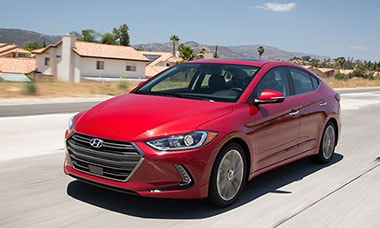
Starting Price: $17,985 | Build
Above Average: Quiet cabin, engaging design, top-tier infotainment
Below Average: Middling interior materials
Consensus: Stylish and well-sorted, it can give segment leaders a legitimate run for their money.
400 Miles in 81 Words
As the perennial low-priced alternative to time-honored compact sedans, the Hyundai Elantra has at last been endowed with proper packaging, technology and driving dynamics to play in the small-car big leagues. Gone is the Elantra’s reputation as being cheap, disposable transportation. It’s now a complete car with an abundance of features that’s priced to better compete with the segment-leading Honda Civic. Of course, whether or not the new Elantra can shake the nameplate’s checkered history of reliability remains to be seen.
A Closer Look
Over the course of our road test, the 2017 Hyundai Elantra gave up almost nothing to the competition when it came to fuel economy, ride comfort, cargo space, and, most of all, in-vehicle tech. Not to mention the Elantra wraps all this right-sized goodness into a package that’s as easy to use as it is to look at. Here’s how sixth-generation Hyundai Elantra stacked up across the major categories, followed by a more detailed analysis of each:
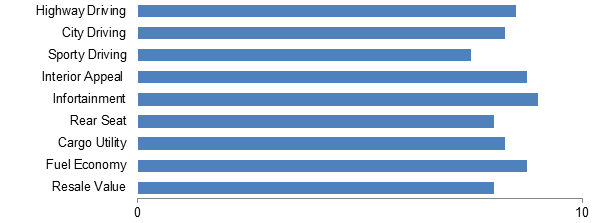
Highway Driving
Hyundai put a great deal of effort into giving the 2017 Elantra a quiet cabin, and it was certainly a worthwhile endeavor. This on-road serenity is especially appreciated on the highway, where the Elantra offers a balanced ride that absorbs bumps and rutted pavement with a surprising level of composure. We did detect a noticeable amount of on-center slack around town, but the steering firmed up nicely at speeds above 50 mph. And while its power figures are mid-pack at best, the Elantra’s 147-horsepower, 2.0-liter 4-cylinder engine offered just enough oomph for passing and merging.
City Driving
Nothing about the Elantra’s in-town demeanor felt out of sorts. Like every car in this class, parking in tight areas was a non-issue and sight lines were good in every direction. As a bonus, the turning radius was actually a tad tighter than that of the Civic and Sentra. Traveling from one stoplight to the next was an uneventful affair as well thanks to the smooth-shifting 6-speed automatic transmission and linear throttle tip-in.
Sporty Driving
Handling was about what you’d expect from a practical small sedan — reasonably confidence-inspiring, though not exactly fun. It lacks the steering precision and feedback of a Civic, but the Elantra’s overall driving dynamics nonetheless put it near the top of the economy class.
Interior Appeal
The Elantra’s cabin wholly embraces the art of simplicity without feeling overly boring or stale. Rudimentary tasks like adjusting volume, switching audio sources, or varying fan speed couldn’t be more straightforward — something that can’t be said for the Honda Civic. Conversely, materials quality ranks near the bottom of our test group, with cheap surfaces lining the outboard armrests, headliner, upper door panels and knee rests. On a brighter note, the steering wheel offers plenty of flexibility for a variety of body types, while the driver’s seat won us over with its 8-way power adjustment, ample thigh support and, unlike the Civic or Cruze, memory settings and 2-way lumbar support.
Infotainment
Our test unit’s 8-inch touchscreen infotainment system earned high marks for its high-resolution display, speedy response times, physical menu controls and uncluttered interface. Android Auto and Apple CarPlay integration were a nice touch, as was the 8-speaker Infinity audio system that, combined with the quietest cabin in our test, enhanced the driving experience immensely.
Rear Seat
While 2017 Elantra still competes in the compact category, the passenger cabin (like those of most competitors) has grown to the point that the EPA now considers it a midsize car in terms of interior volume. As such, rear passengers are greeted to sufficient legroom and headroom along with a serviceable middle seat. Rear charge ports would’ve been a welcome addition, but our tester’s heated rear seats and ergonomic center armrest helped erase any concerns we had about charging peripherals.
Cargo Utility
At 14.4 cubic feet, the Elantra’s cargo area is easily one of the largest in the category. And, if your hands are full as you approach the back of the vehicle, the Elantra’s optional Smart Trunk automatically opens the trunk lid after four seconds — a feature offered by no other compact car.
Fuel Economy
Returning up to 28 mpg in the city and 37 mpg highway, the 147-horsepower, 2.0-liter 4-cylinder isn’t a standout by today’s engine standards. Rivals like the Mazda3, Honda Civic, and Toyota Corolla offer more power and better fuel efficiency than the Elantra SE and Limited models. But, if you can tolerate a less-than-refined 7-speed dual-clutch automatic transmission, there’s an Elantra Eco model that earns EPA scores of 32 mpg in the city and 40 mpg on the highway, though acceleration performance remains about the same.
Resale Value
The 2017 Hyundai Elantra bolsters its attractive sticker price through a lengthy 10-year/100,000-mile powertrain warranty and slightly above average residual values.
Inside and Out: 2017 Hyundai Elantra Limited
Next Compact Car

